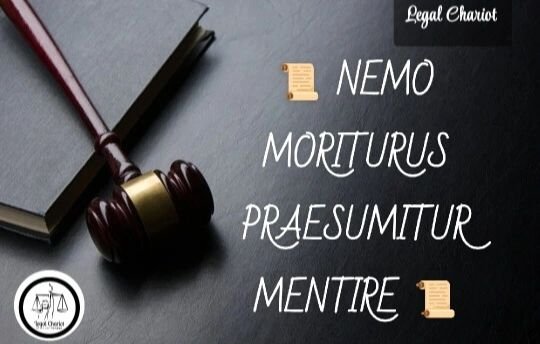The Calcutta High Court’s stance on dying declarations is quite clear: when backed by robust medical, forensic, and eyewitness evidence, they can indeed nail the guilty beyond a reasonable doubt. Let’s break down why dying declarations hold such weight in Indian courts.
Key Aspects of Dying Declarations-
Admissibility: Dying declarations are admissible under Section 32(1) of the Indian Evidence Act, considered a vital exception to the hearsay rule.
Credibility: Courts view dying declarations as credible because they’re made by someone aware their death is imminent – “nemo moriturus praesumitur mentire” (a person on their deathbed won’t lie).
Sole Basis for Conviction: A truthful, voluntary dying declaration can suffice for conviction without corroboration, as seen in Khushal Rao v. State of Bombay and Laxman v. State of Maharashtra.
Fit Mental State: Courts must satisfy themselves the declarant was in a fit mental state; medical evidence typically aids this assessment.
Factors Influencing Reliability-
Consistency: Multiple dying declarations with inconsistencies can weaken their reliability (Irfan v. State of U.P.).
Corroboration: While not always mandatory, corroboration with other evidence strengthens the case (Atbir v. Government of NCT of Delhi).
Recording: No strict format exists; magistrates are preferred recorders, but police-recorded statements can be admissible (Dalip Singh v. State of Punjab).
Judicial Caution-
Scrutiny: Courts rigorously examine dying declarations for voluntariness, coherence and absence of tutoring (Paniben v. State of Gujarat).
Benefit of Doubt: Reasonable doubt leads to accused getting benefit of doubt (Jayamma v. State of Karnataka)
A dying declaration can be a powerful piece of evidence in Indian courts, capable of securing convictions when backed by robust medical, forensic, and eyewitness testimony, as highlighted by the Calcutta High Court. The underlying principle is that a person facing imminent death is unlikely to fabricate lies, making such declarations admissible under Section 32(1) of the Indian Evidence Act. These statements don’t require being made under oath or before a magistrate to be credible; their voluntariness, coherence, and the declarant’s fit mental state are key.

